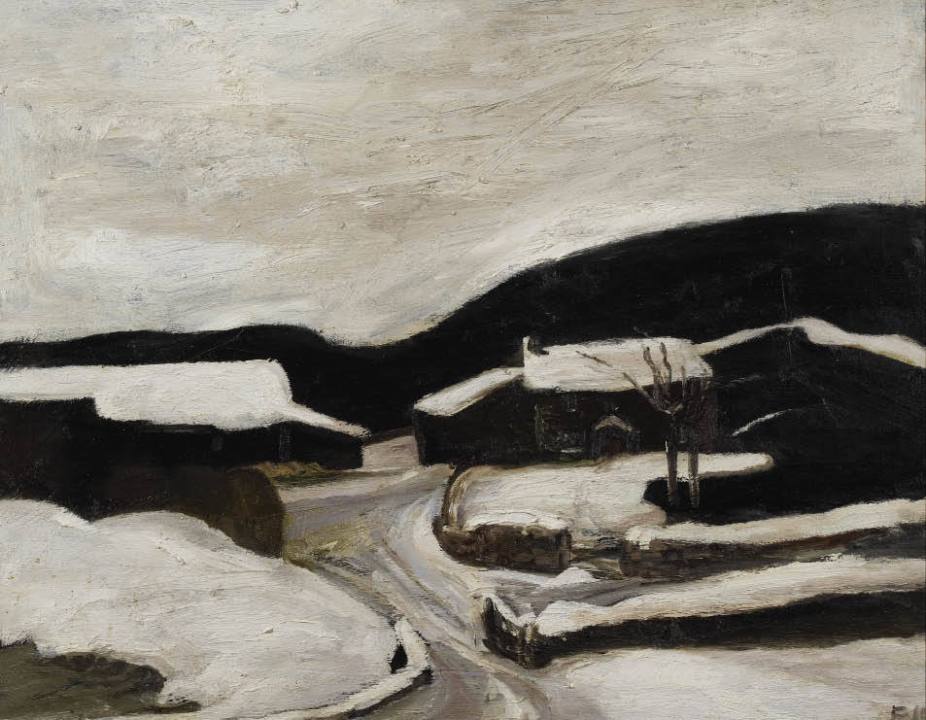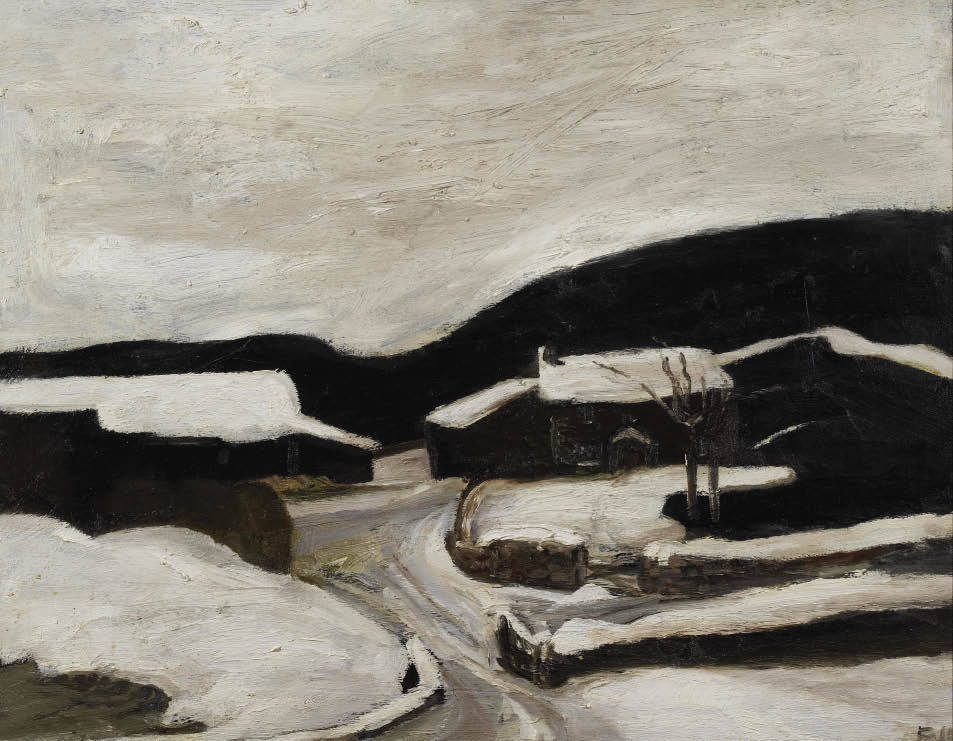The legend of the glamorous artist Sheila Fell (1931–79), with her striking looks — black hair, white skin, large eyes — who died young, has tended to obscure the real achievement of her art.
The legend of the glamorous artist Sheila Fell (1931–79), with her striking looks — black hair, white skin, large eyes — who died young, has tended to obscure the real achievement of her art. She was part of a talented generation which included her friends Frank Auerbach, Jeffery Camp and Craigie Aitchison, and was given her first solo exhibition at the age of 24 by Helen Lessore at the Beaux Arts Gallery in London.
Fell came from Cumberland and painted its landscape. At that first show, L.S. Lowry was so impressed he sought Fell out and they became great friends, though anyone who thinks Lowry had no artistic influence on his young protegée should compare his use of flake white with Fell’s snowscapes of the 1970s. Lowry also offered material help, making Fell an allowance (arranged with great delicacy through her parents), and buying her pictures. His support was crucial, enabling Fell to maintain a working equilibrium despite her convoluted personal life.
But where did her art fit? More exploration of the artistic context is needed: Fell’s relationship with Neo-Romanticism and Expressionism, with artists such as Dora Carrington, Joan Eardley and Josef Herman. As Fell noted: ‘Cumberland is very dark, but being dark it is also brilliant.’
It’s difficult to capture that brilliance in photographs of the paintings, which often look simply dull. The superbly potent charcoal drawings carry it better, but her work needs to be seen, and another museum show (the last one was 20 years ago) would be more than welcome.
This handsome slim volume is somewhat marred by two very poor quality reproductions (numbers 27 and 65) and various misprints (Michael Robertson for Richardson, Nina Herman for Nini, Cyril Connelly for Connolly, Lucien Freud for Lucian). Cate Haste, who is married to Melvyn Bragg and thus has a personal connection to Cumbria, is a writer of political memoirs and historical non-fiction. This is her first art book, and it is too much of a patchwork of exhibition reviews and quotations from the artist. Although elegantly and deftly put together, it does not engage deeply with Fell’s work; reading it is an oddly distancing experience. However, it is the only publication in print on Fell and may help the uninitiated to discover a distinctly worthwhile mid-20th-century British artist.







Comments